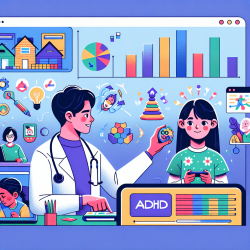Introduction: Bridging the Gap in Child Therapy Services
In the world of speech-language pathology, we constantly strive to enhance outcomes for children by integrating innovative, evidence-based practices. A recent study, "Person-centered strategies for delivering TB diagnostic services in Lima, Peru," offers insights that can be applied to improve therapeutic services for children. This blog post explores how these findings can be adapted to our field, emphasizing the importance of person-centered approaches and diverse service delivery strategies.
Key Findings from the TB Study
The study conducted in Lima, Peru, focused on identifying preferred strategies for delivering TB diagnostic services. The researchers discovered that an integrated mobile unit offering screening for multiple conditions, expedited attention at health centers, and home-based screening were the most preferred strategies among participants. These strategies were favored by 42%, 25%, and 27% of participants, respectively. The study highlighted the importance of providing diagnostic services at diverse access points to promote early diagnosis and close the diagnosis gap.
Applying the Findings to Child Therapy Services
While the study focused on TB diagnostic services, its principles can be applied to speech-language pathology and other child therapy services. Here are some ways to implement these strategies:
- Integrated Services: Just as the integrated mobile unit in the TB study offered multiple screenings, therapy services can be integrated with other health services. This approach can enhance convenience for families and reduce stigma, as children receive comprehensive care in one setting.
- Expedited Attention: Providing expedited attention in therapy services can be crucial, especially for children who have experienced delays in receiving a diagnosis. This approach ensures timely intervention, which is critical for optimal outcomes.
- Home-Based Services: Offering home-based therapy services can increase accessibility for families who face barriers to accessing traditional clinic-based services. This strategy aligns with the home-based screening preference observed in the TB study.
Encouraging Further Research
The study underscores the importance of understanding individual preferences and tailoring services accordingly. Speech-language pathologists and other practitioners are encouraged to conduct further research to identify the preferences and needs of the children and families they serve. By doing so, we can develop more effective, person-centered therapy services that lead to better outcomes for children.
Conclusion: A Call to Action
Incorporating person-centered strategies into child therapy services can significantly enhance outcomes. By learning from the TB study in Lima, Peru, we can adopt a more holistic approach to service delivery, ensuring that our interventions are not only effective but also accessible and tailored to the needs of each child and family.
To read the original research paper, please follow this link: Person-centered strategies for delivering TB diagnostic services in Lima, Peru.










